10 Affordable Big Cities for Renters
Homeownership isn’t for everyone.
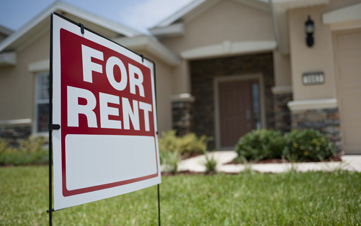

Homeownership isn’t for everyone. Some, including many young adults, simply don’t have the money for a down payment on a house. Others covet the flexibility of renting, which makes it easy to move across town for a better apartment or cross-country for a better job.
Renting is an especially popular option in big cities, where career, social and educational opportunities tend to be clustered and populations tend to be more transient. In fact, renters outnumber homeowners in six of the ten most populous cities in the country, according to the 2010 U.S. Census. But not all rental markets are created equal. An apartment in Manhattan goes for an average of $3,350 a month, more than triple the typical American's mortgage payment.
That's why we went in search of the most affordable big cities for renters. To pinpoint these promising places, we started with the nation's 75 largest metropolitan areas and ranked them based on average monthly rent, median household income for renters, residential rental vacancy rate and overall cost of living. Our top ten cities exhibit an appealing combination of affordable living expenses, including rent, relative to the typical earnings of renters. Take a look.
Disclaimer
Monthly average rent and cost-of-living data for the second quarter of 2013 provided by the Council for Community and Economic Research. Rental vacancy rates as of the second quarter of 2013 provided by the U.S. Census Bureau. Median household income for renters and renter-population data come from the 2007–2011 U.S. Census American Community Survey 5-Year Estimates.
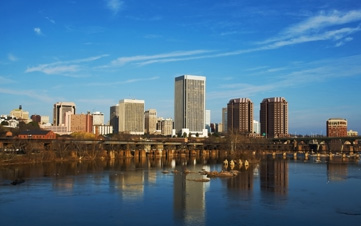
10. Richmond, Va.
- Renter population: 31.1% (148,272 out of 476,146 households)
- Average monthly rent: $883 (national average: $899)
- Median household income for renters: $34,814 (national average: $32,051)
- Cost of living: 1.5% above national average
- Rental vacancy rate: 13.1% (national average: 8.2%)
There's a big initiative to bring more affordable housing, including rental units, to the River City. This is largely because more Gen-Y residents, who may not yet be able to afford a home, are moving to the area. Richmond has the second-highest residential-rental vacancy rate among our top ten cities. In general, an above-average vacancy rate favors renters because it means there's more supply on the rental market from which to choose. Beyond apartments, Trulia.com listed 143 houses for rent, ranging from $525 a month for a 576-square-foot house with one bedroom and one bath, to $3,000 a month for a 2,800-square-foot, four-bedroom house with two and a half baths.
If you're considering moving to this state capital to cut costs and are concerned that you’ll need a car to get around town, don't be. The GRTC Transit System, which includes public bus, shuttle and vanpool services, operates seven days a week throughout the metro area. If you do have a car, you'll appreciate Richmond's proximity to diverse weekend getaways in Washington, D.C., Virginia Beach and Shenandoah National Park -- all within a two-hour drive.
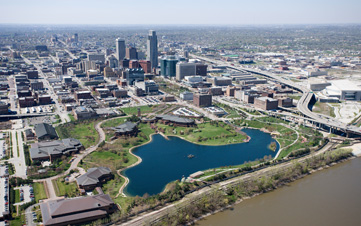
9. Omaha, Neb.
- Renter population: 31.9% (105,623 out of 330,614 households)
- Average monthly rent: $674
- Median household income for renters: $30,757
- Cost of living: 14.4% below national average
- Rental vacancy rate: 4.1%
We recently named Omaha the best city for cheapskates for good reason: The metro area, which includes the neighboring city of Council Bluffs, Iowa, has the third-lowest average rent on our list, as well as the second-lowest cost of living. This helps make it a viable option for renters looking to save. With a revitalization effort that has brought arts, entertainment and sports complexes to the city, more housing and commercial space are also in the works. In the meantime, Downtown Omaha is in high demand among singles, business professionals and empty nesters, which helps explain the city's low rental vacancy rate.
But the tight rental market shouldn’t dissuade you from pursuing the economic advantages of Omaha. On top of cheap living expenses, unemployment is low -- just 4.6% versus 7.3% for the nation as a whole. Some of the top employers include Omaha Public Schools, Offutt Air Force Base and Methodist Health System. The area is also home to several Fortune 500 companies, including ConAgra Foods, Mutual of Omaha Insurance and Berkshire Hathaway.
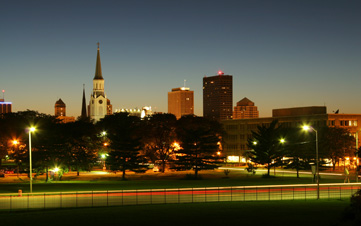
8. Dayton, Ohio
- Renter population: 33.7% (115,985 out of 343,789 households)
- Average monthly rent: $763
- Median household income for renters: $26,385
- Cost of living: 7.9% below national average
- Rental vacancy rate: 12.4%
About an hour's drive from the state capital of Columbus, the Gem City has a downtown area that's a hotbed for renters. There are plenty of housing options, from traditional apartment complexes to renovated warehouses to mixed-use buildings. If you're looking to rent in this metro area, which includes the counties of Montgomery, Greene and Miami, and convenience is a priority, one of the most anticipated projects under construction is the Austin Landing development. It will include office and retail space and more than 200 residential units for rent. Residents will be within walking distance of a grocery store, a movie theater, restaurants and retailers, including Kohl's and TJ Maxx.
Also, Greater Dayton Premier Management, a public housing program, plans to add 1,000 new affordable rental units to the area by 2017. These units will be available to low-income individuals and families, the elderly and people with disabilities.
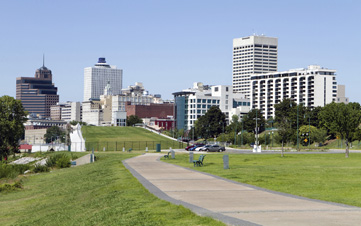
7. Memphis, Tenn.
- Renter population: 35.5% (170,004 out of 477,904 households)
- Average monthly rent: $711
- Median household income for renters: $27,094
- Cost of living: 15.3% below the national average
- Rental vacancy rate: 8.4%
Memphis is a big city, but it doesn’t have big-city prices. The cost of living is the lowest on this list, and the typical rent falls well below the national average. In fact, Memphis came in at number four on our list of the 10 Cheapest U.S. Cities to Live In. Aside from traditional apartments, Trulia.com listed 729 houses available for rent in Memphis, ranging in price from just $109 a month for a one-bedroom, one-bath house to $3,500 for a five-bedroom, four-bath house with a pool.
There's good news for professionals headed to this metro area who plan to drive to the office: The average commute to work is just 23.8 minutes, about 6% shorter than the national average. Not bad considering the local population exceeds 1.3 million. Thanks to economic-development efforts over the last few years, 16,355 new jobs were created in Memphis from 2007 to 2011. The area also made it onto Forbes's 2013 list of 15 U.S. Cities With Emerging Downtowns, which looked at population growth and economic development.
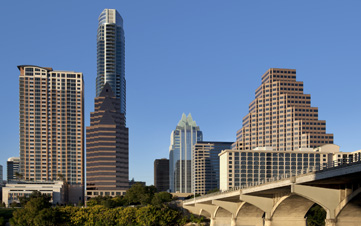
6. Austin, Texas
- Renter population: 41.1% (262,564 out of 637,294 households)
- Average monthly rent: $983
- Median household income for renters: $36,670
- Cost of living: 7.9% below the national average
- Rental vacancy rate: 11.1%
The rapidly growing high-tech and health care sectors are driving demand for more rental housing in the Texas capital, according to a report released by Marcus & Millichap, a real estate investment-services firm. The Far South, North Travis and Central Austin communities are expected to see more newly built rentals, including luxury high-rise apartments, come on the market this year. A strong median income for renters helps offset Austin's average rent of nearly $1,000, the highest monthly total among our top ten cities.
Surprisingly low overall living costs also help ease the sting of elevated rents. Groceries, in particular, are more affordable in Austin, coming in about 15% cheaper than the national average. It doesn't hurt that the Lone Star State also has no personal income tax.
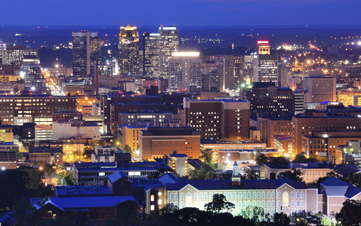
5. Birmingham, Ala.
- Renter population: 28.6% (124,026 out of 432,911 households)
- Average monthly rent: $685
- Median household income for renters: $27,307
- Cost of living: 11.8% below national average
- Rental vacancy rate: 11.6%
Birmingham holds appeal for people of all ages. The metro area, which includes the neighboring city of Hoover, offers budget-friendly Southern living with a big-city feel. Not only was Birmingham featured in our list of 10 Great Retirement Cities in the U.S., but it also made the cut for Forbes's roundup of cities with up-and-coming downtown districts.
Renters in the prime of their careers shouldn’t feel left out. Birmingham's recent unemployment rate was a healthy 5.6%, and there is a strong concentration of good-paying technical jobs, many of which require only an associate's degree or less. Some of the major employers already in the area include Wells Fargo, State Farm Insurance and Mercedes-Benz. The above-average vacancy rate promises a good selection of living choices, and a $30 million apartment project called LIV Parkside, which will combine 228 apartment units and retail space, is expected to open in early 2015.
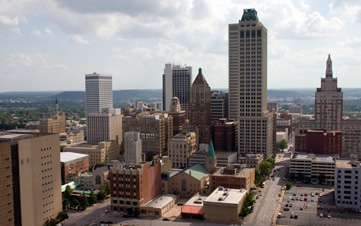
4. Tulsa, Okla.
- Renter population: 32.5% (118,681 out of 364,262 households)
- Average monthly rent: $600
- Median household income for renters: $28,227
- Cost of living: 12.6% below national average
- Rental vacancy rate: 10.4%
- There's been an economic resurgence as of late thanks to the BOK Center Arena, which is home to the WNBA's Tulsa Shock basketball team and the junior hockey league team the Tulsa Oilers. There's also public transportation courtesy of the Tulsa Transit system, which operates multiple bus routes throughout the metro area Monday through Saturday.
Tulsa, the second-largest city in Oklahoma, boasts the lowest monthly rent among our top ten cities at nearly $300 below the national average. Those cheap rents helped T-Town take the top spot in ApartmentGuide.com's affordability rankings, which evaluated metro areas based on rental rates for one- and two-bedroom units, as well as the amenities offered. Baby-boomers and empty nesters are flocking to downtown Tulsa, where they're snatching up loft-style apartments.
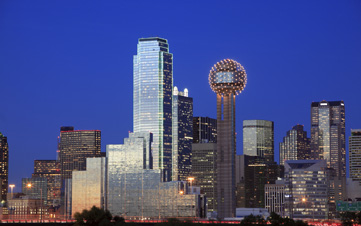
3. Dallas
- Renter population: 37.4% (841,454 out of 2,246,574 households)
- Average monthly rent: $813
- Median household income for renters: $35,860
- Cost of living: 3.6% below the national average
- Rental vacancy rate: 9.8%
- If you're a twenty-something just starting out, Dallas may be a good fit. It ranked on our list of the 10 Best Cities for New Grads largely because of the growing job market. The area is home to several Fortune 500 companies, including AT&T and Tenet Healthcare. Would-be entrepreneurs should take note that Dallas also made our list of 10 Great Cities for Starting a Business.
The Dallas metro area, which includes Fort Worth and Arlington, has the most renter-occupied households on our list. Living expenses (including rent) fall below the national average even as renters earn more than average. And all those well-paid renters need to live somewhere. There are 33,000 apartment units projected to be built by year-end, according to Marcus & Millichap. The bulk of that new housing will be constructed in central Dallas and the northern suburbs.

2. Las Vegas
- Renter population: 43% (301,799 out of 701,836 households)
- Average monthly rent: $776
- Median household income for renters: $40,400
- Cost of living: 0.1% below the national average
- Rental vacancy rate: 13.7%
The Las Vegas metro area has the highest median household income for renters on this list, at about $8,300 above the national average. The higher salaries are courtesy of the gaming, tourism and education industries that fuel the local job market. Sin City also has a high proportion of renters to homeowners and the highest rental vacancy rate on the list. The vacancies extend beyond traditional apartments; Trulia.com recently listed 2,427 single-family houses available for rent.
The Vegas area has finally started to see significant recovery from the recession, which has helped revive the tourism industry and shore up the local labor market, according to Marcus & Millichap. As a result, builders are rolling out more apartments equipped with high-end amenities to cater to well-paid renters who are more confident in the economy and their job security.
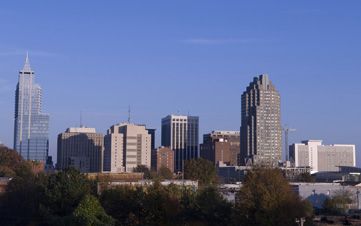
1. Raleigh, N.C.
- Renter population: 31.8% (132,947 out of 417,485 households)
- Average monthly rent: $640
- Median household income for renters: $34,567
- Cost of living: 7.4% below the national average
- Rental vacancy rate: 11.7%
Renters who don't want to break the bank should consider Raleigh, the second-largest city in North Carolina. It topped our list of the best big cities for renters thanks to its attractive combination of super-low rents, affordable living costs and above-average incomes for renters. Raleigh is also featured in our roundup of the 10 Best Cities for Cheapskates.
The metro area, which includes nearby Cary, is part of what locals commonly refer to as the Triangle. The Triangle region also includes the cities of Durham, home to Duke University, and Chapel Hill, home to the University of North Carolina. North Carolina State is in Raleigh proper. So no matter where you choose to settle, big-time college sports are just a short drive away. If you want to save on gas or simply prefer to use public transportation, the Triangle Transit system, which consists of regional bus, vanpool and shuttle services, operates Monday through Saturday.

Get Kiplinger Today newsletter — free
Profit and prosper with the best of Kiplinger's advice on investing, taxes, retirement, personal finance and much more. Delivered daily. Enter your email in the box and click Sign Me Up.

Browne Taylor joined Kiplinger in 2011 and was a channel editor for Kiplinger.com covering living and family finance topics. She previously worked at the Washington Post as a Web producer in the Style section and prior to that covered the Jobs, Cars and Real Estate sections. She earned a BA in journalism from Howard University in Washington, D.C. She is Director of Member Services, at the National Association of Home Builders.
-
 Two Don'ts and Four Dos During Trump's Trade War
Two Don'ts and Four Dos During Trump's Trade WarThe financial rules have changed now that tariffs have disrupted the markets and created economic uncertainty. What can you do? (And what shouldn't you do?)
By Maggie Kulyk, CRPC®, CSRIC™
-
 I'm Single, With No Kids: Why Do I Need an Estate Plan?
I'm Single, With No Kids: Why Do I Need an Estate Plan?Unless you have a plan in place, guess who might be making all the decisions about your prized possessions, or even your health care: a court.
By Cynthia Pruemm, Investment Adviser Representative
-
 12 Great Places to Retire in the Midwest
12 Great Places to Retire in the MidwestPlaces to live Here are our retirement picks in the 12 midwestern states.
By Stacy Rapacon
-
 10 Cheapest Small Towns to Live In
10 Cheapest Small Towns to Live InThe cheapest small towns might not be for everyone, but their charms can make them the best places to live for plenty of folks.
By Dan Burrows
-
 Best Cold Weather Places to Retire
Best Cold Weather Places to RetirePlaces to live Some like it hot; others not so much. Here are the 12 best places to retire if you can't stand the heat.
By Stacy Rapacon
-
 The Cheapest Places To Retire in the US
The Cheapest Places To Retire in the USWhen you're trying to balance a fixed income with an enjoyable retirement, cost of living is a crucial factor to consider.
By Stacy Rapacon
-
 The Six Best Places to Retire in New England
The Six Best Places to Retire in New Englandplaces to live Thinking about a move to New England for retirement? Here are the best places to land for quality of life, affordability and other criteria.
By Stacy Rapacon
-
 Best Cold Weather Places to Retire
Best Cold Weather Places to Retireplaces to live Some like it hot; others not so much. Here are the 12 best places to retire if you can't stand the heat.
By Stacy Rapacon
-
 15 Ways to Prepare Your Home for Winter
15 Ways to Prepare Your Home for Winterhome There are many ways to prepare your home for winter, which will help keep you safe and warm and save on housing and utility costs.
By Donna LeValley
-
 Hurricane Insurance Claims: 10 Things You Need to Know
Hurricane Insurance Claims: 10 Things You Need to KnowBecoming a Homeowner Hurricane damage? Know what your insurance will and won't cover to make the most of your policy if you need to file a claim.
By Kimberly Lankford
